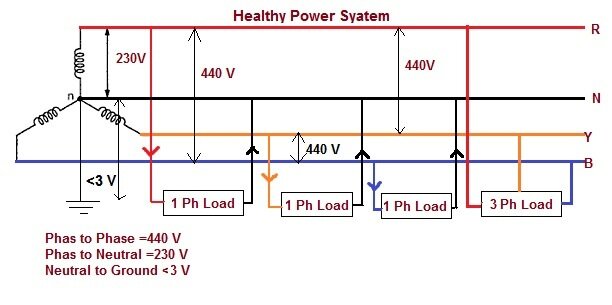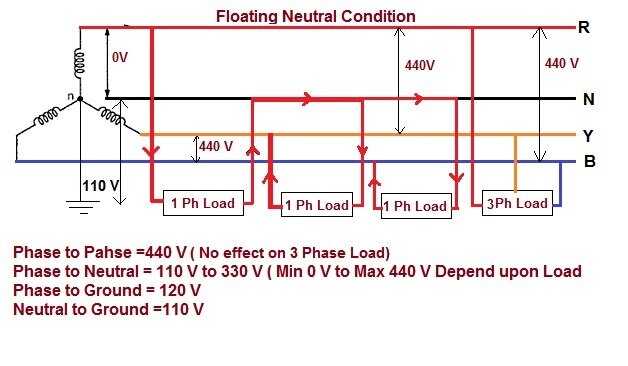>
the reason why the voltage in a domestic dwelling rises when the neutral is broken out in the street? 3 phase is not something I deal with...
This is NOT particularly a "3-phase" problem.
Some places use single-phase center-tapped, and we have the same problem.
One circuit needs two wires.
But you can do two circuits on three wires, three circuits on four wires. This can save a lot of costly copper.
US, Canada, and others use 120V lamps but usually delivered as 240V 1-phase, center-tapped to give two 120V circuits on three wires (and also a 240V connection for cooker).
When the Neutral comes loose, all heck can break loose.
I set up an audio mixer in a college lounge for a concert. There was some problem but then it worked. Worked really well. About 20 minutes later
BOOM! and a lovely 1m wide mushroom cloud of smoke from the mixer. Meanwhile a coffee-maker in the adjacent office wasn't getting hot.
Immediately after the event I measured 170V at my "120V" outlet, but as we will see this will vary.
College electrician was called and found a bad Neutral joint in the fusebox. (Just as in your Pet Peeves thread, low-bidders don't always get ALL the screws TIGHT.)
The drawing shows the approximate conditions.
Office and lounge were fed separate circuits. 120V circuits are staggered over both sides of center-tap for balancing and reduced Neutral current. Office and lounge turned out to be opposite sides of the split.
There was a 1,000+ Watt coffee-maker in the office, my ~~100 Watt audio mixer in the lounge.
With all three wires, each load got nearly 120V. Small drop in line loss.
With-OUT the center-tap Neutral, the big pot and small mixer were in SERIES across the full 240V.
You all know how to derive voltages in a series circuit with known resistances. But I put some numbers on anyway.
The mixer is no-way a pure resistance, but I've assumed it is to get a quick answer valid-enough to show the general trend.
In this case the mixer got about 1.8 times the nominal voltage, because its 'resistance' was about 10 times the resistance of the coffee-pot and they were splitting double-voltage. Back in the office the pot was scarcely warm having about 0.2 times what it wanted.
As we see, the lost-center can give more or less than nominal depending what loads are on each side.
OK, you have 3-phase. The main difference is that your loads fight, not one, but two other loads. And in domestic service these will be other houses or even other streets. (I could observe an adjacent load running cold; you didn't know Ms Smith's tea wasn't even tepid.) Through diversity there is a better chance you won't have an eXtreme unbalance like my 10:1. But it is sure to be way off the nominal. Could be low, could be high.
(There's also a lot of root-3 in calculating 3-phase splits. But since you don't know the connected loads at other services this is minor.)



 Sorry to the OP if I've only confused you more!
Sorry to the OP if I've only confused you more!












